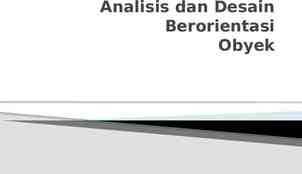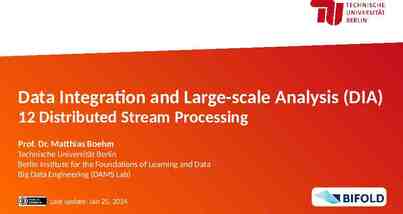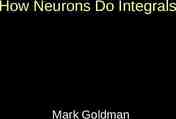Welcome to the world of qualitative content analysis! Transcription
7 Slides429.65 KB

Welcome to the world of qualitative content analysis! Transcription Udo Kuckartz & Stefan Rädiker March 2023 qca-method.net

What rules to apply when transcribing interviews for QCA? 1. Each contribution to the conversation should be transcribed into its own paragraph. Changes in speaker are denoted by an empty line to improve the readability of the transcription. 2. Paragraphs belonging to the interviewer or moderator should begin with an ‘I:’ or ‘M:’ while those belonging to the respondent are denoted by a unique abbreviation such as ‘R:’. To distinguish between several persons in one recording, the abbreviations should be supplemented by numbers, such as ‘M1:’, ‘M2:’, ‘R1:’, ‘R2:’. Names or pseudonyms can be used as an alternative to abbreviations. 3. Transcription should be verbatim, not based on sounds or simply contain summaries. Any components of dialects should be translated into the standard language. 4. Language and punctuation should be smoothed slightly to accommodate written standards. 5. Long, clear pauses should be marked by three full stops in brackets ‘(.)’. 6. Any terms that a person emphasized should be underlined. 7. Anything a person says loudly should be capitalized.

What rules to apply when transcribing interviews for QCA? 8. The approving or affirming vocalizations on the part of the interviewer (‘mhm’, ‘aha’, etc.) should not be transcribed as long as they do not interrupt the person’s flow of speech or can be interpreted as direct answers to a question. 9. Fillers such as ‘um’ are only transcribed if they are meaningful in terms of content. 10. Any disruptions should be listed in double parentheses indicating the cause, e.g., ‘((telephone rings))’. 11. Any of the respondent’s or interviewer’s vocalizations that support or clarify a statement should be noted in simple parentheses, e.g., ‘(laughs)’, ‘(sighs)’. 12. Like vocalizations, non-verbal activities in video recordings of interviews and focus groups should be noted in simple parentheses, e.g., ‘(opens the window)’, ‘(turns away)’. 13. Unintelligible or unclear words should be noted as ‘(unclear)’. Words and passages where the wording is only suspected are bracketed and marked with a question mark at the end, e.g., ‘(kobold?)’. 14. Time stamps are inserted at the end of each conversational contribution; if necessary, time stamps are also inserted in cases of incomprehensible passages in a longer paragraph.

Software for “manual” transcription EasyTranscript (www.e-werkzeug.eu/index.php/en/) ExpressScribe (www.nch.com.au/scribe/) f4/f5transcript (www.audiotranskription.de/en/) HyperTRANSCRIBE (www.researchware.com) InqScribe (www.inqscribe.com) Transcriber (sourceforge.net/projects/trans) It is also possible to transcribe with QDA software such as MAXQDA or NVivo.

Tools for automatic transcription (selection) AmberScript (Netherlands) f4x (Germany) HappyScribe (Ireland) Otter.ai (USA) TEMI (USA) Trint (UK) Speechmatics (UK) There are many more services all around the world. Please consider aspects of data protection when using automatic transcription. Automatic transcription will save you up to 50% of time compared to manually transcribing, but you need to schedule time for reviewing and correcting the automatically created transcripts.

Limits of automatic transcription not possible for extreme dialects accuracy is lower than manually transcription - no pauses (only f4x offers this feature) no indication of emphasized words no indication of loud words no confirming words such as mhm, aha

Happy transcribing






